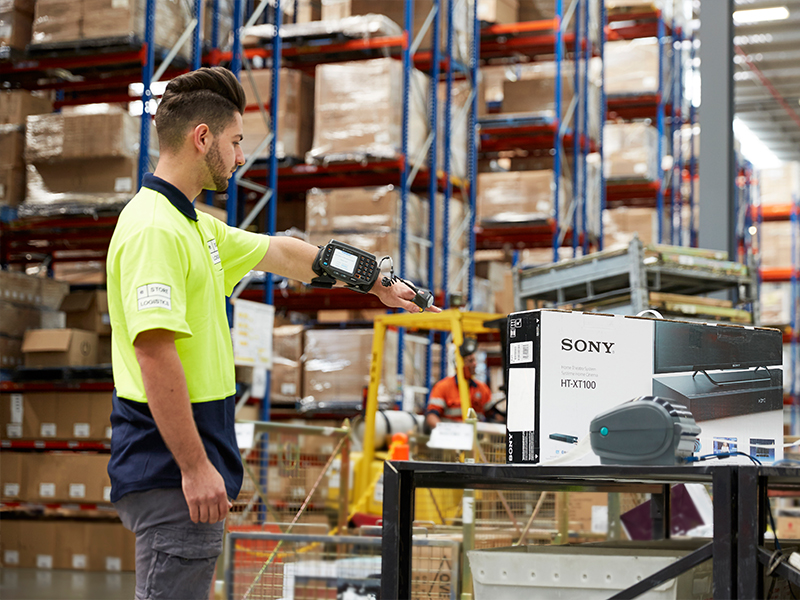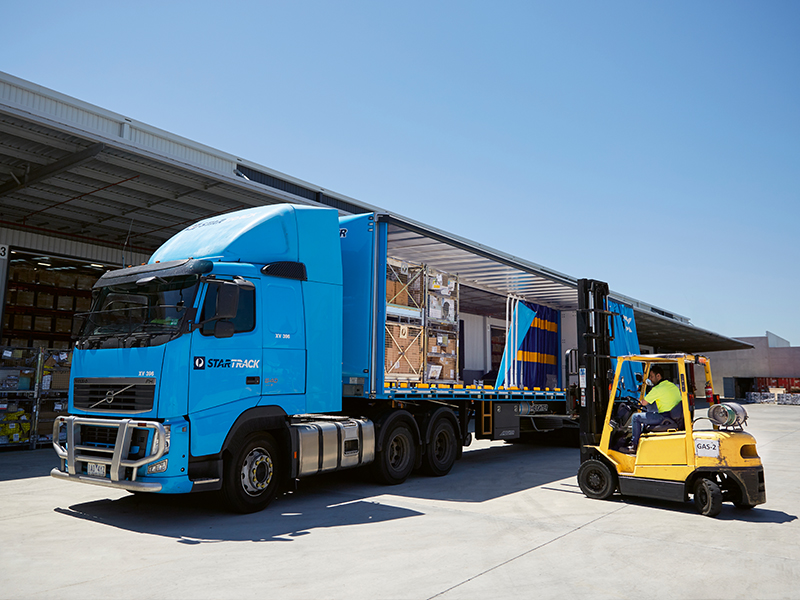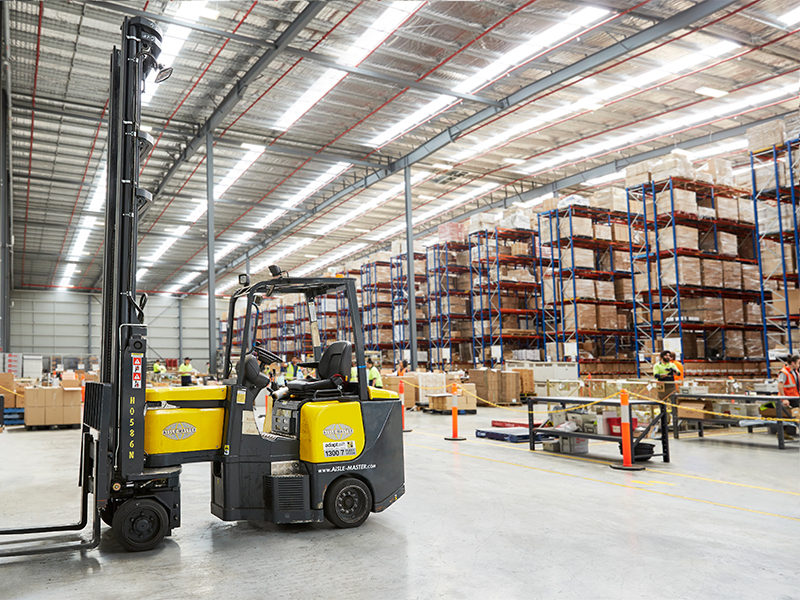How Leigh Williams turned his start-up into Australia's largest provider for online retail and retail stores
 |
|
Leigh Williams
|
When Melbourne information technology whizz Leigh Williams founded his warehousing and order fulfilment business, eStore Logstics, back in 2008, he grappled with an unexpected problem.
Potential clients weren’t taking him or his business card seriously. The issue, says Williams, was his age. He was only 26, and looked even younger.
“I initially had ‘managing director’ business cards printed out, but I think many people saw it as a risk, giving their business to such a young, inexperienced guy.
“So I threw out those cards and got a new batch printed up saying, ‘solutions specialist.’ It had more of a sales person vibe, and they probably assumed there was someone else behind the business.”
Today Williams is proud to return to the managing director cards, having seen his 3PL order fulfilment and warehousing business grow to become Australia’s largest provider for online retail and retail stores, fulfilling up to 30,000 orders a day.
Their current three warehouses in Sydney and Melbourne already total 30,000 square metres they’re about to add another Melbourne warehouse of 13,000 square metres and a new Sydney warehouse of 15,000 square metres.
The business has grown 30-40 per cent every year over the last three years, taking a conservative approach to marketing.
 |
|
eStore Logistics facility in Derrimut has over 20,500 pallet positions
|
Get the systems right first has always been the motto. Their IT systems are now ahead of the game and ahead of their time.
Intangible algorithms crunch numbers and data and somehow find a way to shoot out the right parcel at the right time to the right person, fulfilling a startlingly diverse array of products.
In November 2016 they won the Supply Chain and Logistics Association of Australia (SCALAA) Information and Technology Management award for their revolutionary freight optimisation management system.
They’re fresh faces using IT know-how and analytical thinking to gain overwhelming market share in the competitive 3PL warehousing and transport industry. And it seems they’re just getting started.
But the heart of the phenomenal success is perhaps those two words printed on the replacement business cards back when it looked liked it might never happen: solutions specialist. And the key to finding a solution is being able to recognise a problem in the first place.
 |
|
Founder & MD Leigh Williams (left) with GM James Ellls
|
OPPORTUNITY KNOCKS
Leigh Williams began his post-uni career at Accenture and IBM, working mostly in consulting. But side-projects were increasingly taking up his time. “E-commerce was just starting to take off,” he says.
“I started buying and selling on ebay, importing stock from Asia.” It was through this experience that Williams saw the problems that this new model was facing.
“I knew that other online retailers were having trouble with their logistics; getting their products to customers. I recognised that there weren’t really any warehousing or order fulfilment providers doing a good job.”
Online sales in Australia now account for seven per cent of total retail sales, which is still only around half the figure seen in the UK and USA, which suggest there is still much growth to be had in the market.
The challenge in e-commerce is fulfilling thousands of small and variable orders a day, rather than predictable, square pallets.
 |
|
All warehouse activities are system directed using Manhattan SCALE WMS
|
It was a model Williams says the big players weren’t interested in getting involved with. One of Williams’s first customers was a little-known online department store called Kogan.
Today Kogan needs no introduction, turning over hundreds of millions of dollars through its online direct-to-customer model.
All their Australian stock now passes through Williams’s warehouses. eStore Logistics’ other big-name clients include Temple and Webster, Hairhouse Warehouse, Patagonia, Musashi, Dick Smith and Mountain Bikes Direct.
No straight wholesale fulfilment happens under these roofs, but a lot of omni-channel does.
An example of an omni-channel client is Hairhouse Warehouse, who has two hundred franchise stores, hold stock at a corporate level for selling to franchise stores and independents, and also sell online.
SYSTEMS IN ACTION
The Melbourne head office in Derrimut looks out into a warehouse of constant activity. The busiest areas are the swaths of packing tables where orders are packaged to the individual packaging requirements of each client and sorted by carrier.
It’s all designed around efficiencies and eliminating the need for workers to return multiple times to the same shelf to pick the same type of item.
“When an order comes in to our system there’s an algorithm that allocates it to a wave flow, based on the order profile, volume and like-orders for that day,” says Williams.
Every worker has a wearable computer on their wrist that displays all the information required for them to pick and pack the next order, with a built-in ring scanner, so they’ve always got their hands free.
 |
|
Each day up to 30,000 e-commerce and omni-channel orders are fulfilled
|
All orders received by midday will go out that same day. There are over 20,000 pallet positions within the high-rack aisles of this one facility, and 15,000 small bin locations.
Adaptalift Hyster Aisle-Master articulated forklifts weave through the aisles, 70 per cent of which are narrow-aisle to allow for more volume.
Out in the yard outbound pallets and ULDs are staged in lines according to carrier. Trucks start rotating in and out from midday till 7pm, up to 20 semi-trailers a day.
The main carriers are Australia Post, Toll, Allied Express and Bluestar, whose freight is mixed when it leaves the eStore Logistics warehouse.
Also being trialled is a new same-day delivery service to the Melbourne metro area, with pallets broken down into north, south, east and west runs.
Being a bulk buyer of freight means eStore Logistics can then on-sell that lower shipping cost to their clients.
As impressive as the logistics are for getting the freight picked and sorted for delivery are though, it’s the IT systems behind the scenes that allow it to happen.
IT STARTS AND ENDS WITH DATA
Paramount was designing a system that allowed clients to integrate quickly and seamlessly with eStore Logistics’ WMS, Manhattan SCALE.
It’s done through a plug-in, averting the need for clients to run expensive, IT integration systems.
In simple terms what this means is shops selling their products via major shopping carts such as Magento or Shopify or Big Commerce can plug straight into eStore Logistics’ WMS.
“When clients have a sale in their shopping cart it pushes the order down into our system, we fulfil that order and send a message back to the shopping cart, put the tracking number into our system then send an email to the customer telling them the order has been fulfilled.”
The challenge with a system so reliant on automated processes lies in collecting accurate data. “We might have a client who sells kettles.
We need to upload the correct weights and dimensions into our system. If a mistake is made in that process it will create a bottleneck along the line because the wrong box will be chosen.
So when we have a new client come on board it’s vital we hold their hand and make sure they understand the importance of data,” says Williams.
 |
|
Adaptalift Hyster Aisle-master forklifts are used in narrow aisles which maximise storage capacity
|
Perhaps the most impressive element of the data automation process is the award-winning proprietary freight optimisation software.
It’s away of automatically selecting the correct steps down the chain to fulfil a certain order.
“We’ve got a big online wine retailer who does 1000 cases a day,” says Williams.
“When they make a sale they don’t have to tell us which warehouse to source the stock from, or which carrier to use to fulfil the order. Our system looks at where inventory is available, looks at the shipping carriers, looks at the cost, and choses the best combination.”
Another essential factor in running an efficient warehouse is making accurate labour predictions. This is done by using a system Williams calls the “reverse labour plan.”
He says it came about through the need to be super-reactive to what people online in e-commerce, as opposed to getting a forward view like you might in wholesale.
“The reverse labour plan looks at our clients and the different type of work we have to complete for them, and we’ve benchmarked each work type for each customer based on how long it takes to complete. We make labour projections based on that. It’s super important.”
THE THREAT OF AMAZON
With their warehousing running on a vastly different model to Amazon, Williams says he sees Amazon as only a very small threat.
“We create logistics solutions here, that’s not what Amazon does. For example Kogan can’t be serviced by Amazon, because they have too many requirements. But they’re a threat in the sense that we have clients whose volumes reduce because of the competition of stuff that’s being sold on Amazon.”
He says he shares the sentiment of many that Amazon may struggle to work in Australia.
“Canada is probably the closest country to Australia (in terms of population and geography) where they’ve launch. My understanding is they’ve had a very low penetration rate there. I think it’s way overhyped about what it’s going to do to Australian retail.”
 |
|
Performance dashboards are used by the team to monitor performance
|
TRADITIONAL BUSINESS WITH NEW TOOLS
While the business model and the IT behind eStore Logistics might be cutting edge, it’s essentially a business run on traditional logistics and transport business sense.
Get economies of scale, increase volume to aggregate freight and get the lowest possible delivery cost, look for continuous improvements, make things simple for your customers, be accurate, be fast and most importantly delivery a great product. A good sign that you’re going well is when no one knows you’re actually there.
“We’re invisible in the process,” says Williams. “People assume their products come from the online retailer’s warehouse. It’s our job to make our clients look as good as possible to their customers.”
Behind every great system is a great mind, and Williams says he’s lucky to be surrounded by some of the brightest minds in the game. It’s also no accident that most of those bright minds are young.
“We pride ourselves on developing our staff internally and retraining them. Our customer service manager started as a forklift driver, moved to team leader, then supervisor, and got to where he is now.”
Williams looks back from where he is now and shakes his head in wonder.
“It was tough for many years. I suffered a lot of knock backs and wondered what I’d got myself into. It’s fantastic to see that we’ve now built something that is really scalable for us, and that’s also a scalable solution for our clients.”
Check out the full feature in the October edition of ATN. Subscribe here.

